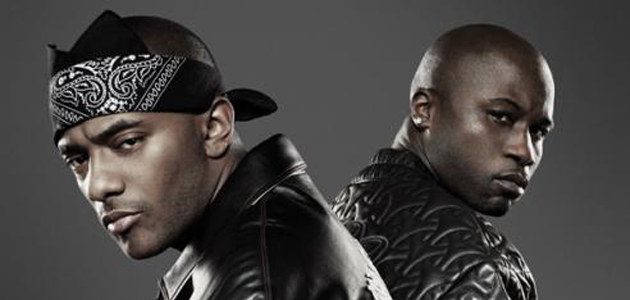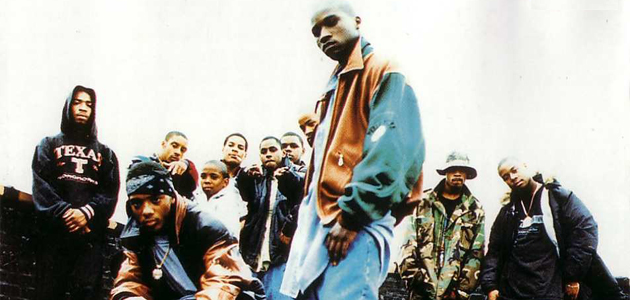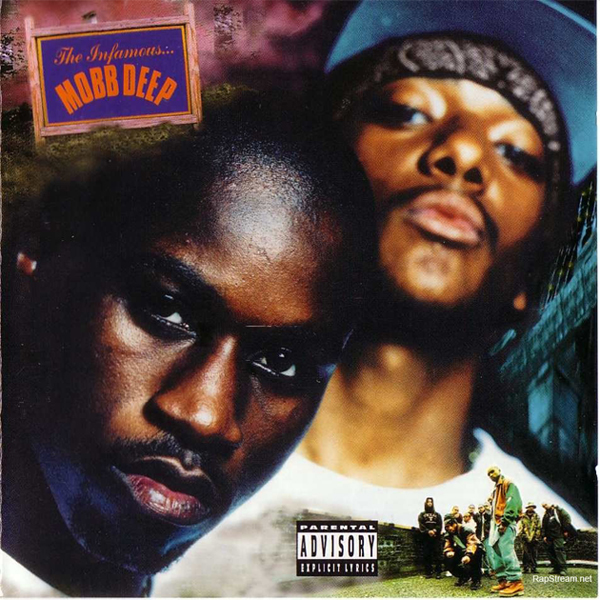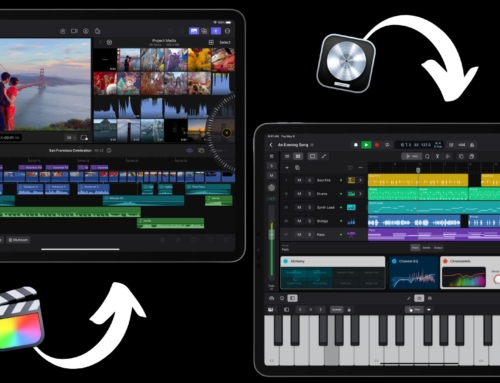Following up the legendary releases of the previous year such as Notorious B.I.G.’s Ready to Die, Nas’s Illmatic, and Outkast’s Southernplaylisticadillacmuzik, 1995 held its own special place in Hip Hop history with albums like 2Pac’s Me Against the World, Raekwon’s Only Built 4 Cuban Linx, and Goodie Mob’s Soul Food. This was also the year that the New York rap duo Mobb Deep (Prodigy and Havoc) released their second album, The Infamous. After going gold in 3 months, The Infamous legitimized Mobb Deep as a nationally prominent act, after the relative disappointment of their first release, Juvenile Hell, in 1993.
East Coast hip hop fans embraced The Infamous as an instant classic. Three of the hottest New York MCs at the time, Nas, Raekwon, and Ghostface Killah, all made lyrical contributions to the album; and Q-Tip produced three tracks, as well. The remainder of the album was produced by Havoc (with guest producers on two tracks) in the classic mid-nineties New York style of low pass filtered bass lines and jazz-inspired drum patterns with hard snares. Best exemplified by tracks like “Shook Ones Part II,” “Temperature’s Rising,” and “Cradle to the Grave,” Mobb Deep captivated fans with their gritty sound and raw lyrics.
Surprisingly though, critics initially regarded The Infamous with some reservation. Perhaps due to the enormous commercial success of albums like Ready 2 Die, Illmatic, and Me Against the World, The Source’s Dimitry Leger remarked “The Infamous falls short of classics like Illmatic and Strictly Business, but definitely upholds their tradition.” Initially, The Source ranked the album 4.5 mics out of 5, and Rolling Stone rated the album 3.5 out of 5 stars.

As time passed, however, the album became more popular to fans, artists, and critics nationwide. Several years later, both magazines would re-rate the album and give it perfect scores, and the album’s most successful single, “Shook Ones Part II,” would be sampled on over 80 album releases from artists ranging from B.O.B., Curren$y, The Game, and Fabolous to Sublime and Jordan Knight. “Shook Ones Part II” even had a prominent role in the movie 8 Mile. But in recognition of the fact that a great single does not define a whole album, none of these successes truly address Leger’s legitimate criticism.
To truly understand why this album is worthy of perfect scores, when it directly competes with so many legendary albums that out sold it and are oftentimes regarded as “better,” we must take ourselves back to 1995. Hip Hop had long since matured from its New York roots, and new styles had evolved throughout the United States. Since the 1988 releases of N.W.A.’s Straight Outta Compton and Ice-T’s Power (which went platinum and double platinum, respectively), the West Coast Gangsta Rap legacy had been continued by rappers like 2Pac, Snoop Dogg, Too $hort, and MC Eight. Southern Gangsta Rap was also developing a national audience, as The Geto Boys’ Till Death Do Us Part went gold in 1993. Scarface’s solo release, The Dairy, went platinum in 1994, the same year UGK’s sophomore album, Super Tight, debuted at #9 on the US Billboard Top R&B/ Hip Hop chart. By 1995, Gangsta Rap had become the most popular style of Hip Hop in many mainstream and underground circles, but for the first time in hip hop history the premiere style was not dominated by East Coast rappers.

Not to say that the East Coast rappers at the time were soft, but I argue their MC style was more traditional, even if they had Gangsta Rap tracks on their albums. And while I draw an admittedly blurry line to distinguish these types traditional hip hop MCs, like Notorious B.I.G. and the Wu Tang Clan, from gangsta rappers, my distinction rests upon the artistic priority of the MC. If the artist prioritizes personifying the outlaw lifestyle in his or her work, as opposed to focusing on refining an original style of expression, that artist is a gangsta rapper. Based on that distinction, the East Coast lacked a hardcore Gangsta Rap album until Mobb Deep’s The Infamous in 1995.
Prodigy explains it best in an interlude on the second track of The Infamous, “Don’t ever get me confused with some of those other niggas you might see on TV, hear on the radio, and such,” distinguishing himself and from the non-gangsta “rap-ass niggas.” While I don’t think he was addressing Notorious B.I.G., I do think he was directing that comment to other East Coast artist like Method Man and Jeru Da Damaja, who were more traditional MCs.
By 1995, lifestyle, whether real or perceived, validated and defined the gangsta rapper in a way it had not in previous forms of hip hop. Mobb Deep’s style of Gangsta Rap blended classic New York rap flow and production with a style of MCing that was born in California. Pioneering this fusion they laid the foundation for East Coast Gangsta Rap, a tradition to later be carried on by artists like 50 Cent and G Unit, Jadakiss and Styles P, The Diplomats and many others.
Regardless of whether you are Mobb Deep fan, you must recognize that The Infamous brought the hardcore Gangsta Rap style of MCing to the East Coast. The Infamous marked a milestone in hip hop history. It represented an evolution of MCing on the East Coast and validated the depth of contributions made by MCs that were initially disregarded as disillusioned gang bangers and pimps. While The Infamous may fall short to classics like Illmatic or Strictly Business, if judged as a traditional hip hop album, when judged as a Gangsta Rap album, it supercedes both albums and holds its own against Straight Outta Compton, The Chronic, The Diary, and even Ready To Die.





